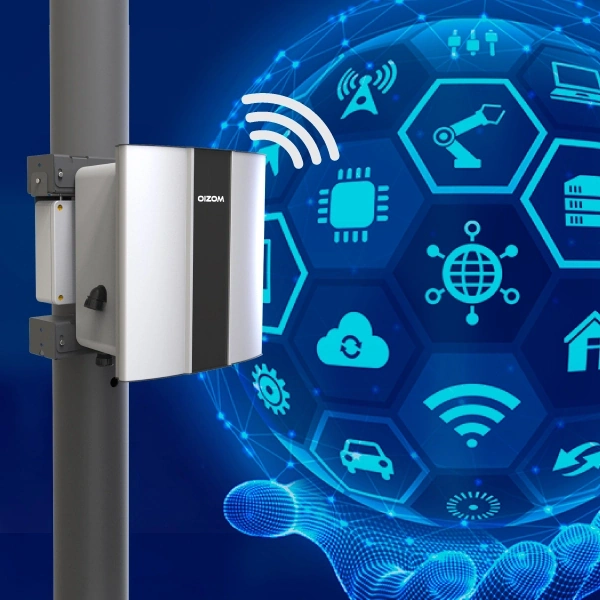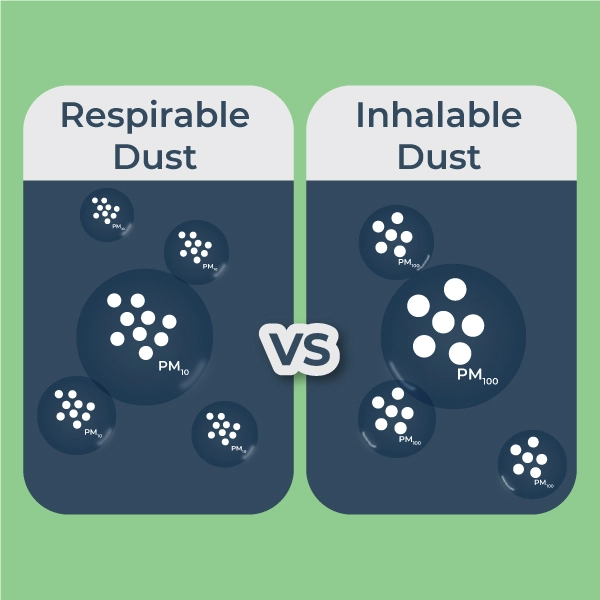Summary of Blog
Air quality is a significant issue impacting health and the environment, necessitating regular monitoring. Traditional air quality monitoring methods, such as manual systems and reference stations, have limitations. IoT air pollution monitoring systems offer a modern solution with various components like sensors, communication modules, microcontrollers, and cloud platforms. These systems provide real-time monitoring, data analysis, and cost-effective deployment. They are widely used in smart cities, personal monitoring, and industrial applications to detect air pollutants, enhance public health, and meet regulatory standards. IoT technology’s growth is evident, with devices expected to surpass 24.4 billion this year. By monitoring IoT-enabled air pollution, cities and industries can proactively manage air quality, ensuring a cleaner environment and improving quality of life. Oizom’s devices, for example, offer reliable, cost-effective monitoring solutions, enabling comprehensive data collection and proactive environmental management.
What are the Benefits of Using an IoT Air Pollution Monitoring System?
Nowadays, air quality is a significant issue because it causes various serious illnesses. Regular monitoring is required to control the effects of poor air quality on human health and the environment. As an environmental engineer with extensive experience in air quality research using sensor-based air monitors to measure air quality, I decided it was time to give you all the information regarding the IoT air pollution monitoring system.
Various professionals still depend on old methods, such as manual air quality monitoring systems, open path monitoring systems, and CAAQMS reference stations for monitoring air quality. Researchers and scientists developed various strategies to ease the procedure and its problems. Today, we do not have to rely on a single method to collect environmental information. A wide range of monitoring methods is available to fulfill various monitoring requirements.
I will share insight into the IoT air pollution monitoring system with various components, benefits, and applications. IoT-enabled smart cities offer chances to improve the quality of life for their citizens. Municipalities use connected devices to collect and analyze data about the city, including air quality, energy consumption, and traffic monitoring. City leaders utilize analytics and related data to guide policy, improve services, optimize public transportation routes, etc. For example, several cities are studying ways to enhance air quality.
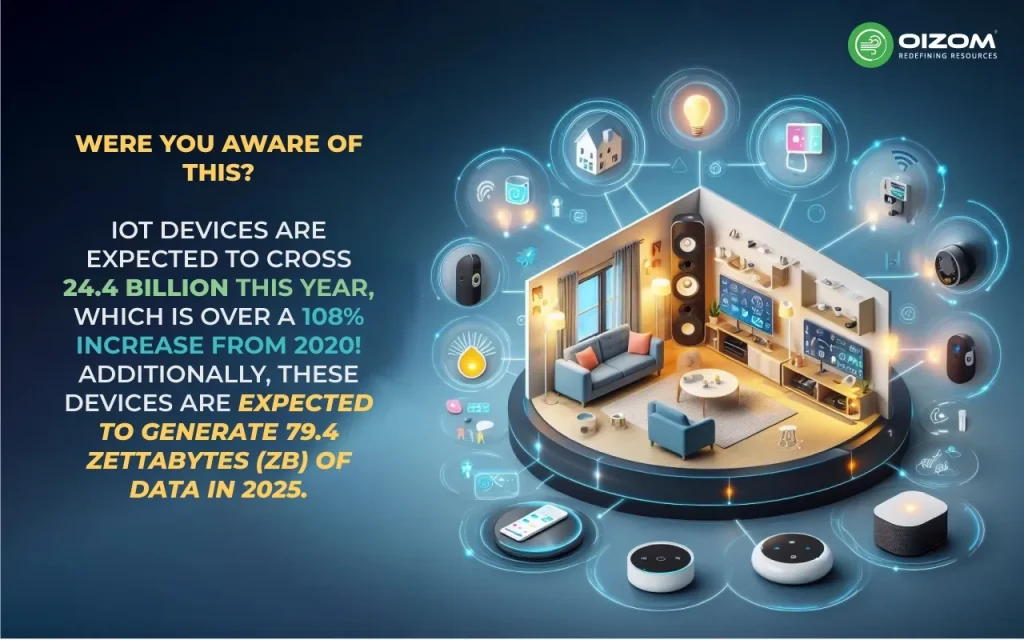
Components of an IoT Air Pollution Monitoring System
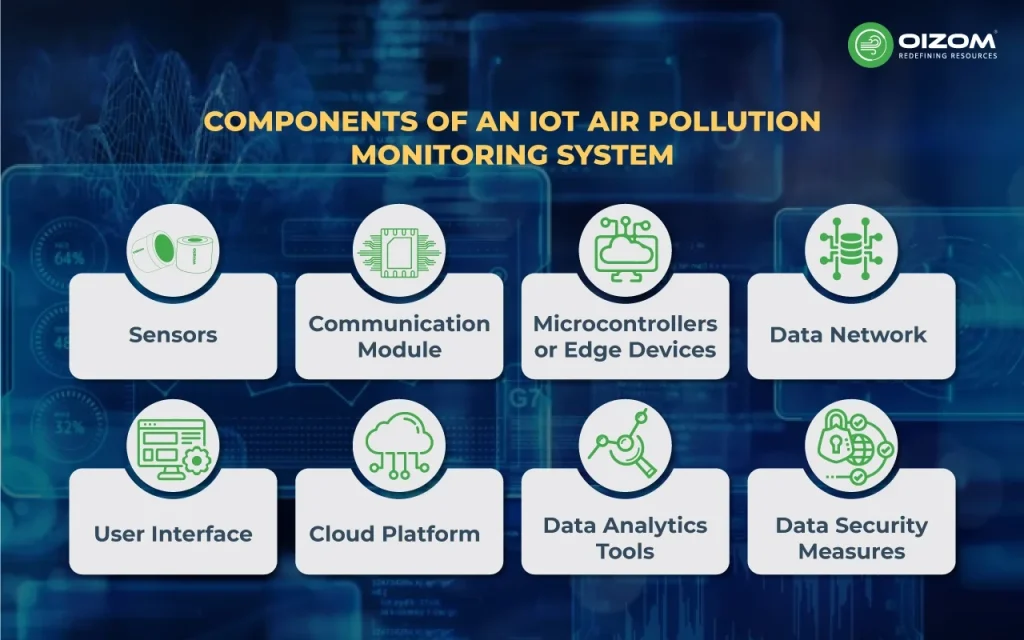
IoT-based air pollution monitoring systems comprise multiple components that work together to gather and evaluate air quality data. Components include:
Sensors
Sensors are the main component of IoT-based air pollution monitoring systems. They monitor air quality indices such as particulate matter, carbon monoxide, sulfur dioxide, and nitrogen oxides. Sensors can be divided into two types: physical and chemical sensors. Physical sensors measure temperature, humidity, and pressure, whereas chemical sensors detect air contaminants.
Communication Module
The communication module transmits data from the microcontroller to the cloud server. It can employ various wireless technologies, including Wi-Fi, Bluetooth, and cellular networks.
Microcontrollers or Edge Devices
This is a type of integrated circuit that can be used as an embedded system. Though small in size, it is powerful enough to perform tasks with limited resources. It collects data from multiple sensors for transmission to the modem or IoT gateway. Use a microcontroller that is easy to integrate and delivers high performance.
Data Network
IoT networks wirelessly connect physical objects and transmit data for further processing using modern data analytics and cloud computing techniques.
User Interface
The user interface comprises the features of a user interacting with a computer system. This comprises screens, pages, buttons, icons, and forms. The most visible examples of user interfaces are software and applications for computers and cell phones.
Cloud Platform
The cloud server is a centralized platform for storing, analyzing, and sharing air quality data. It collects data from the communication module and stores it in a database. The cloud server also provides web and mobile applications for users to access the data.
Monitoring with Oizom devices, which provides real-time accurate data on a cloud platform known as Envizom, is very useful for analyzing air quality data. Envizom is Air quality monitoring software for real-time air quality data acquisition, visualization, and analytics. The Oizom environmental data interpretation engine fetches the data from the Oizom Environmental monitoring stations. On receiving the data, the engine runs necessary corrections and compensation algorithms. Envizom uses secured HTTPS servers for data storage. Alternatively, this data can also be stored on-premise local servers.
Data Analytics Tools
Statistics and machine learning algorithms are employed to find patterns and trends in the data. IoT data analytics also includes employing data visualization tools to provide insights and conclusions in an easy-to-understand way. Dashboards, charts, and graphs are examples of visualization tools that help users quickly understand data and make logical, practical decisions. As a result, they may make an informed decision based on the insights gained from IoT data analytics.
Data Security Measures
Data security is the practice of securing digital information throughout its life cycle to prevent corruption, theft, or unwanted access. This includes everything: hardware, software, storage devices, and user devices; access and administrative controls; and organizational rules and procedures. Data security uses tools and technologies that enhance the visibility of a company’s data and its use.
Data Collection and Transmission
The devices gather information from the external environment and send it to the next layer. This layer transmits data from IoT Air Pollution Monitoring Systems to processing systems. It comprises communication protocols and networks like Wi-Fi, Bluetooth, MQTT, and Zigbee.
Benefits of IoT Air Pollution Monitoring Systems
There are various benefits of IoT air Pollution Monitoring Systems. These are mentioned below:
Real-time Monitoring and Data Analysis
Companies can use outdoor air quality monitoring systems to measure the air quality index around their production facilities. For example, smart sensor devices are deployed in the appropriate regions in enclosed spaces and operate automatically. They detect the presence of particle matter or air contaminants in the air and send notifications to smartphones immediately, and, as a result, limit their emissions. This assists them in adhering to rules and avoiding any legally enforced fines from air quality management agencies when air pollution levels surpass acceptable limits.
Various cloud platforms, such as environmental monitoring software, are developed for analyzing the data. Dashboards, charts, and graphs are examples of visualization tools that help users quickly understand data and make logical, practical decisions. As a result, they may make an informed decision based on the insights gained from IoT data analytics.
Cost-Effectiveness and Easy Deployment
Oizom’s air quality monitoring devices are reliable and accurate, providing a more cost-effective alternative to existing reference stations. Unlike expensive reference stations, which can hinder implementation due to their high cost and occupancy, Oizom’s technology offers a financially practical solution while maintaining performance. This low cost enables more deployment, resulting in more thorough air quality data collecting and proactive environmental management. With Oizom, communities can now afford to monitor air quality effectively, achieving the goals of a healthier environment in smart cities, industries, construction sites, and so on.
Applications of IoT Air Pollution Monitoring Systems
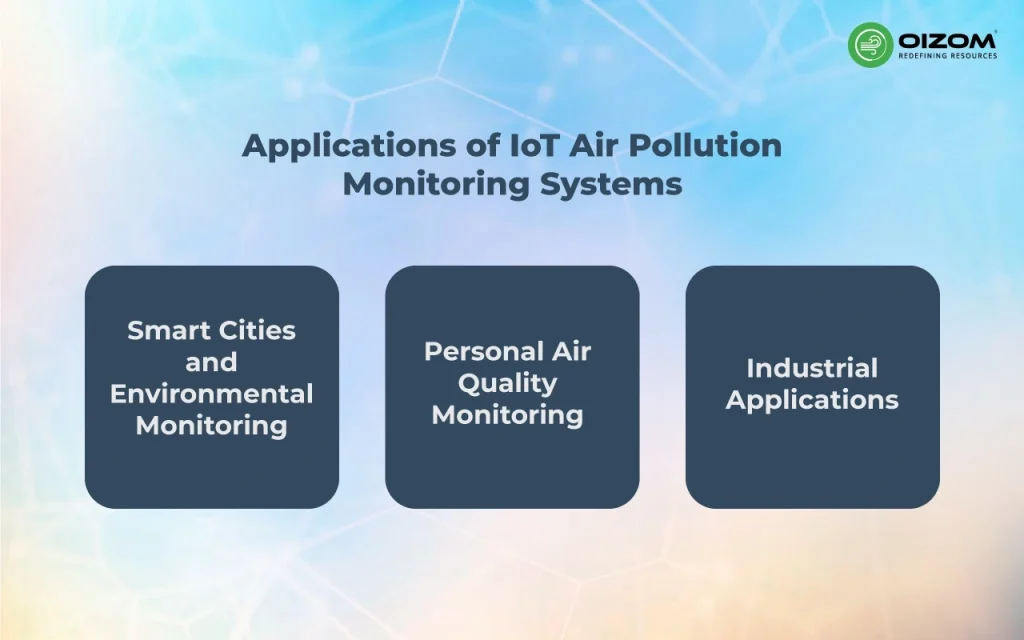
Sensor air quality technology is being used with the help of IoT. This system has various applications, which are mentioned below:
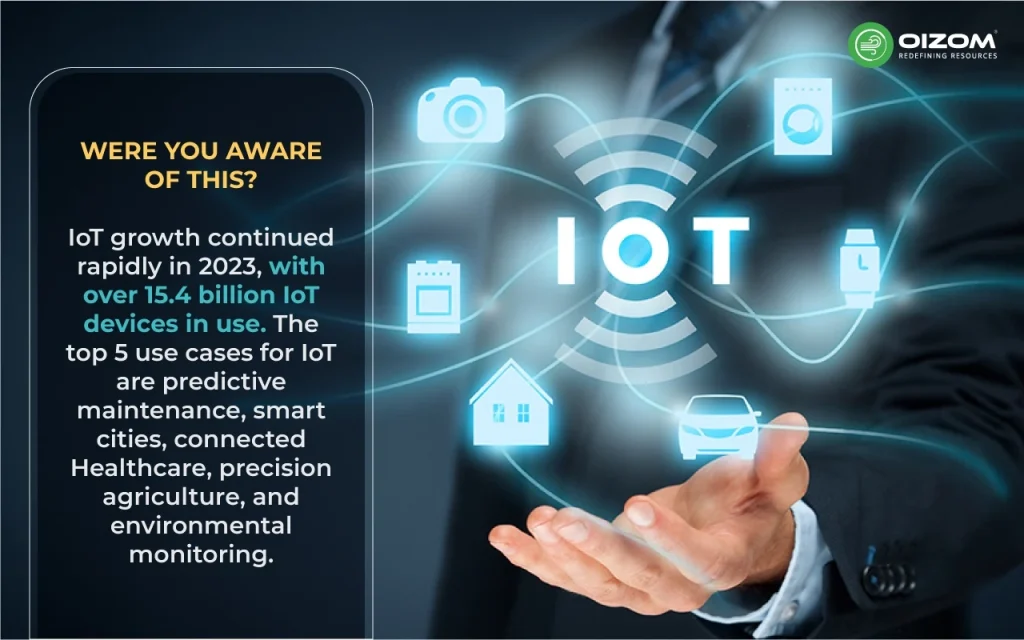
Smart Cities and Environmental Monitoring
Air quality sensors monitor the air in cities and other densely populated regions to detect changes that may impact population health. Several cities are utilizing these sensors in IoT machines to monitor regions with high pollution levels and send messages advising people to wear masks or stay at home during specific times of the day.
You can read more about how the Arunachal Pradesh State Pollution Control Board monitors air quality with polludrone.
Personal Air Quality Monitoring
Until recently, government agencies and research organizations were primarily responsible for testing and reporting on air quality. Government air monitoring programs adhere to tight processes for operating, maintaining, and reporting validated data. Monitoring PM2.5 has never been easier! Personal air quality monitoring allows you to monitor PM2.5 levels in real-time accurately. This small and portable monitor is ideal for monitoring air quality in your home, business, automobile, or wherever you go. Simply switch it on, and it will begin detecting PM2.5 levels instantly. The wide, easy-to-read display provides the current PM2.5 level and air quality guidelines.
Industrial Applications
Industrial processes frequently contribute to ambient air pollution factors such as particulate matter, gasses, and noise. Measuring these characteristics with an air quality monitoring system for industries gives real-time data and automates pollution control equipment operation to satisfy legal criteria. Furthermore, industrial leaks can lead to regrettable incidents and risk workers’ health. Continuous air quality monitoring in industries provides real-time detection of anomalies such as gas leaks, immediate increases in PM, noise levels, and dangerous gasses. Alerts and alerts created can help you take fast action.
Conclusion
Finally, The Internet of Things (IoT) is important in linking and integrating diverse objects and systems as the physical and digital worlds combine to build our modern society. An IoT-powered air quality monitoring system consists of sensor devices and gateway connectivity, providing a data-driven approach to monitoring air quality. The solution is fully equipped with the essential devices and modern processes to ensure a cleaner environment free of air pollution and other hazardous components. With air quality monitoring systems, industries can detect the presence of these toxics and monitor air quality to take intelligent measures to improve the air quality for their workers.

